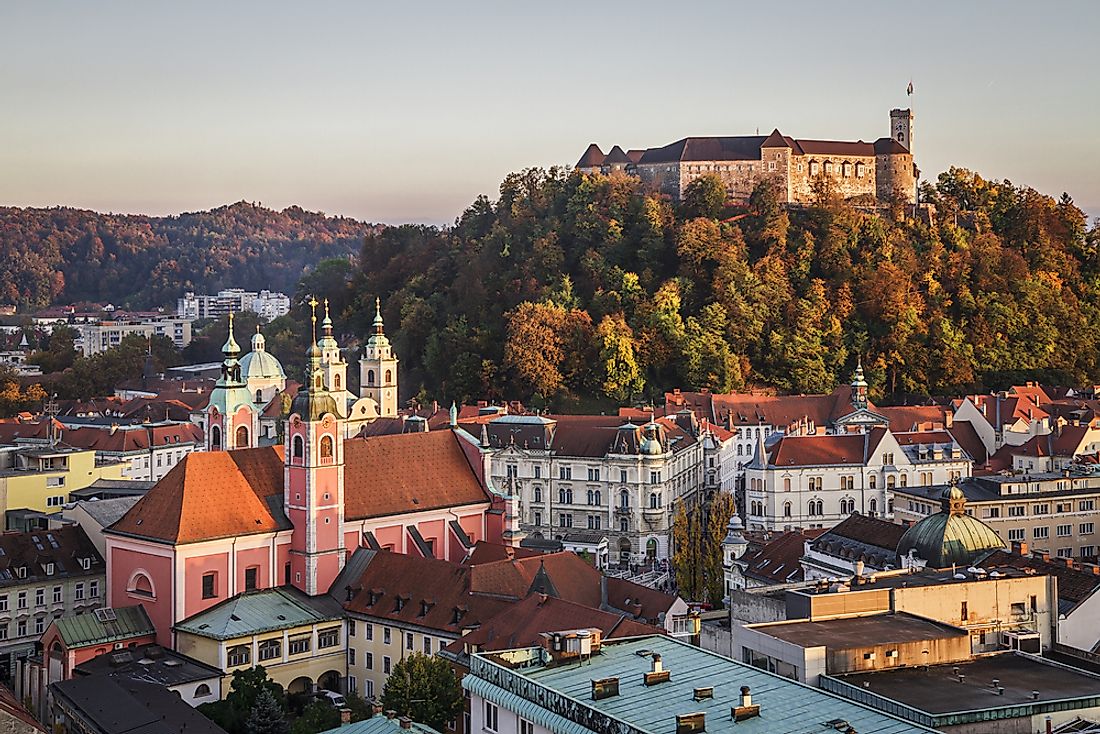What Is The Capital Of Slovenia?

The city of Ljubljana not only serves as Slovenia’s capital but it is also the economic, educational, and cultural hub of the nation. Ljubljana had approximately 279,756 inhabitants in 2016 while the metro area had a population of 537,712. The city is classified as medium-sized European City, and it has managed to preserve a small-town appeal while still growing to be a metropolis.
History Of Ljubljana
During the prehistoric era, the Ljubljana marshes near the city were home to communities living in pile dwellings. These lake-dwelling inhabitants survived by primitive agriculture, hunting, and fishing. The people made dugout canoes by cutting out the inside parts of tree trunks. The region subsequently became a transit point for peoples such as Illyrians, Celts, Lapydes, and the Taurisci. Around 50 BC, the Romans established a military encampment that was upgraded to a permanent settlement referred to as Lulia Aemona. Emona was home to 5,000-6,000 people and played a significant role during wars. The settlement was occupied by various peoples while urban settlement in the area began in the second half of the 12th century. Ljubljana obtained town privileges between 1220 and 1243. After successive occupations by various powers, it became the capital of a newly independent Slovenia in 1991.
Location And Geography Of Ljubljana
Ljubljana occupies an area of 63.2 square miles in the Ljubljana Basin in the central part of Slovenia between the Karst and the Alps. The city lies 296 miles east of Zurich, 160 miles east of Venice, 250 miles southwest of Budapest, 220 miles southwest of Vienna, 200 miles south of Munich, and 139 miles south of Salzburg. The city has an elevation of 968 feet, and the city center is situated along the Ljubljanica River. Ljubljana’s highest point is known as Grmada at 2,218 feet. The other main rivers in the city are the Sava, the Mali Graben, the Iščica, and the Iška Rivers. The city is also home to the Koseze Pond which houses unique plant and animals and the Tivoli Pond is famous for fishing.
Climate Of Ljubljana
The city’s climate is oceanic featuring such continental characteristics as moderately cold winters and warm summers. Ljubljana records annual precipitation of about 1,400 mm placing it among the wettest European capitals. January temperatures reach 0 degrees Celsius making it the capital's coldest month. The warmest months are July and August when temperatures range between 25 to 30 degrees Celsius. Snow is witnessed in Ljubljana from December to February while it also experiences fog for about 64 days annually.
Role Of The City
Ljubljana supports a large industrial sector dominated by petrochemicals, pharmaceuticals, and food processing. Banking, tourism, transport, and construction are also major employers. The BTC City, located in Ljubljana, serves as the largest business, shopping, entertainment, and cultural center in the country and it attracts 21 million visitors annually. Many companies and shops are situated in the BTC City. The Ljubljana Stock Exchange deals with the nation’s big companies, and it was acquired by the Vienna Stock Exchange in 2008. The city prides in a rich culture and has numerous museums, theaters, and galleries. Ljubljana features architecture from various influences such as Roman, baroque, and renaissance. Some of the notable landmarks in Ljubljana are the Franciscan Church of the Annunciation, the Town Hall, the Ljubljana Castle, the Ljubljana Cathedral, Nebotičnik, and the Robba Fountain. Ljubljana also features some prominent bridges including the Triple Bridge, the Butcher’s Bridge, the Dragon Bridge, and the Trnovo Bridge. The University of Ljubljana has 23 faculties offering courses in medicine, natural sciences, law, applied sciences, and administration among others.







